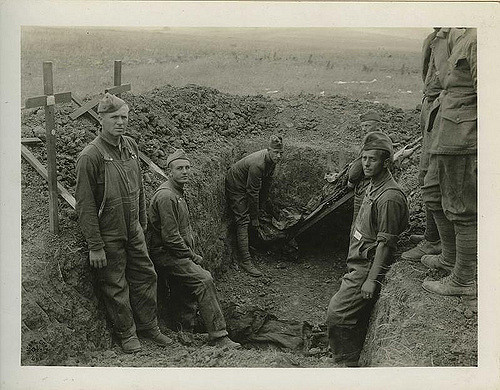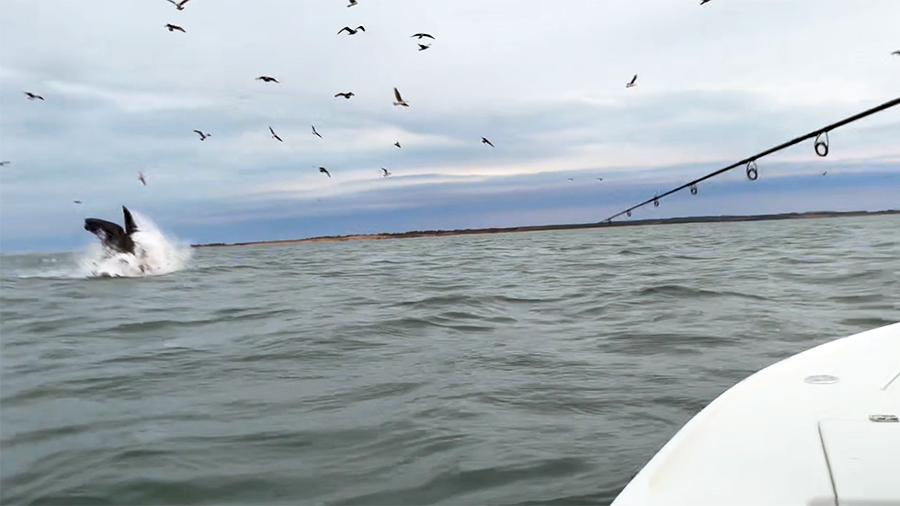It was sociable, tenacious, and adaptable. When it tired of torture, it turned to murder.
The Spanish flu of 1918-1919 first targeted soldiers training to support America’s allies during World War I. At Suffolk’s Camp Upton Army base, 6,131 men were hospitalized. To prevent panic, the press, the military, and the government downplayed it. But the pandemic infected 500 million globally within 15 months.
A typical flu kills less than one percent of those infected. This one killed up to 100 million, including 675,000 Americans — 5 percent of the world’s population.
EXTRAORDINARY VIRUS
In January 1918, farmers in dusty, flat Haskell County, Kansas received wartime subsidies for hog backs. So, the farmers raised pigs. Flying above the pigs, birds navigated major flyways. Avian viruses can infect hogs, especially in crowded conditions. When a bird virus and human virus infect a pig cell, they can produce a virus that’s lethal to humans.
Suddenly, pig farmers were falling down in the fields. Then, others sickened. America needed troops to fight in the “War to End All Wars,” including Haskell recruits exposed to the flu. Within weeks after entering nearby Camp Funston, 1,100 soldiers were hospitalized and thousands more sickened.
THE CAMP UPTON KILLER
Brookhaven National Laboratory now occupies the land where Yaphank’s Camp Upton opened in 1917. In spring 1918, the flu’s first non-fatal wave hit. Troops who survived the virus transported it to France and every European army. Soon, a deadlier mutation decimated upper respiratory systems and lungs with viral or bacterial pneumonia, sometimes suffocating victims in bodily fluids.
In September, Upton closed to check the virus’ spread. The New York Times reported, “There had been no deaths and no serious cases of influenza,” but by October 1918, Upton had 3,050 cases. The gauze masks everyone wore offered little protection: One sneeze broadcasted 500,000 virus particles, and viruses survived on hard surfaces for 24 hours.
MAKING IT WORSE
Every few weeks, new brigades joined the front, providing fresh bodies for the virus. Physicians’ requests for clean, uncrowded barracks were ignored.
Surgeon General William C. Gorgas admitted, “We can control pneumonia absolutely if we could avoid crowding the men, but it is not practicable in military life …”
The “Spanish Lady” devastating the European camps, trenches’ close quarters and international seaports hadn’t actually originated in Spain. Because Spain was neutral, its relatively uncensored press reported influenza statistics. That made infections seem worse than in France, Great Britain, and America, who suffered more deaths from influenza than war, but suppressed facts to avoid encouraging enemies.
With no effective vaccines or anti-viral treatments in that pre-antibiotic era, the runaway death toll likely ended the war earlier than predicted. While other viruses favored children, the elderly, and those with weakened immune systems, the 1918 strain ravaged healthy victims like soldiers, turning their immune systems against their own bodies.
DISASTER-MOVIE SCENARIO
New York churches, businesses, and saloons closed. People starved, fearing shopping for food, and nobody would visit. “Healthy” people boarded the Coney Island subway and died before reaching Columbus Circle. In one 10-week siege, 20,000 died.
But officials held that battling on foreign soil trumped surviving in the homeland. President Woodrow Wilson rejected policies that might weaken America’s role in the conflict. U.S. Surgeon General Rupert Blue described “mild cases of influenza.”
If the 1918 flu recurred today, it would kill more Americans in a year than die annually from heart disease, cancers, strokes, chronic pulmonary disease, AIDS and Alzheimer’s disease. It’s possible: Type A avian flu influenza viruses that adapt best to vaccines spring from the 1918 virus. A severe strain could mutate this year (Northern Hemisphere pandemics usually hit in late spring or early summer). New cases may have peaked, but the season lasts through May.
Researchers recently found that simply breathing without coughing or sneezing spreads the virus. They advocate staying home, vaccination, and hand washing.
Jonathan Quick, M.D., Global Health Council chair, takes it a step further, saying, “We have inadvertently developed a powerful way of helping influenza to kill us, 100 years on,” citing the crowding of thousands of pigs or chickens in poor conditions, creating the ideal lethal virus environment.
Despite our 1918 influenza genome sequencing and global systems tracking emerging strains, a new pandemic could collapse global economies, disrupt food and medical supplies, and worse.
Quick says this “disaster-movie nightmare” is “waiting to come true, thanks to the most diabolical, hardest-to-control and fastest-spreading potential viral killer known to humankind.”


























